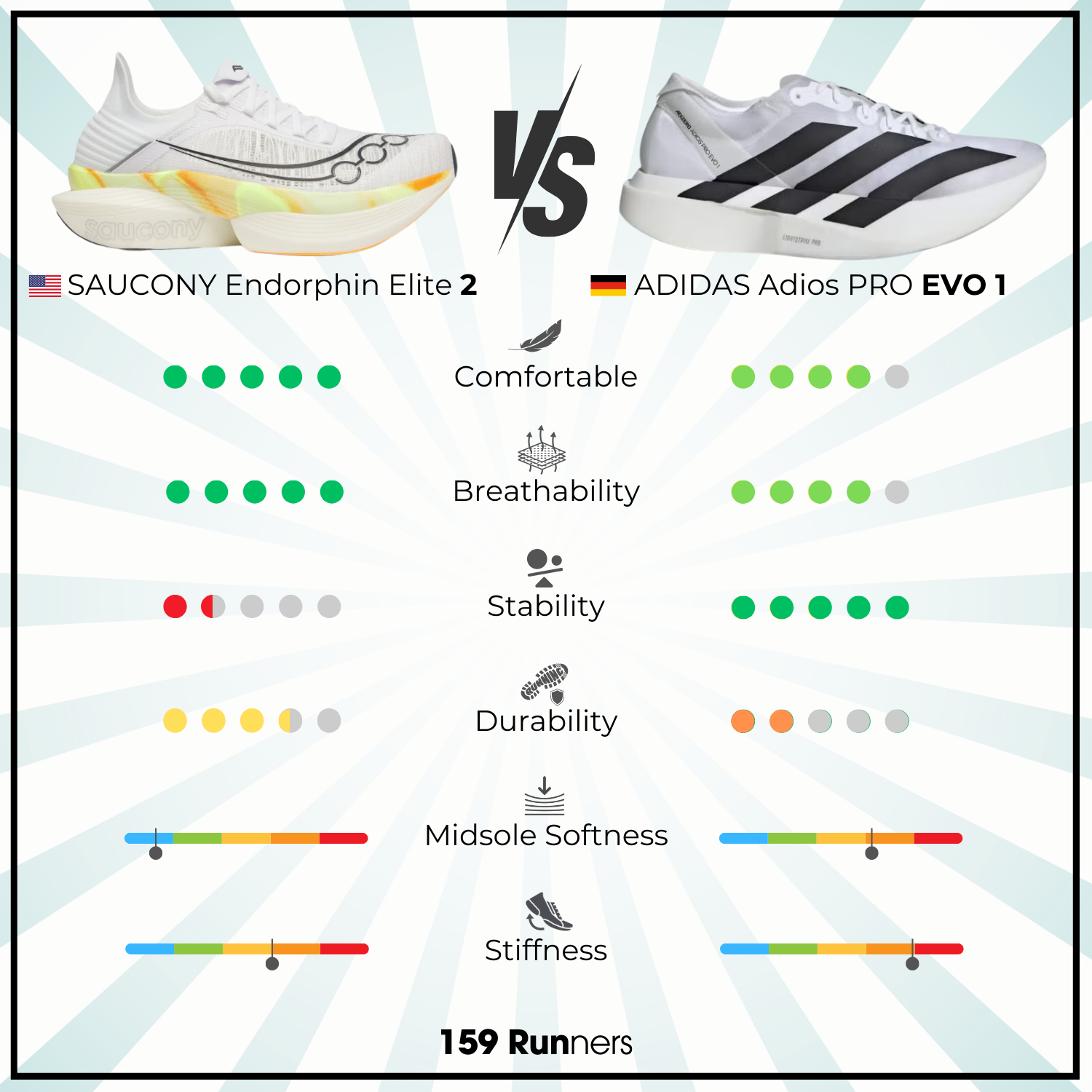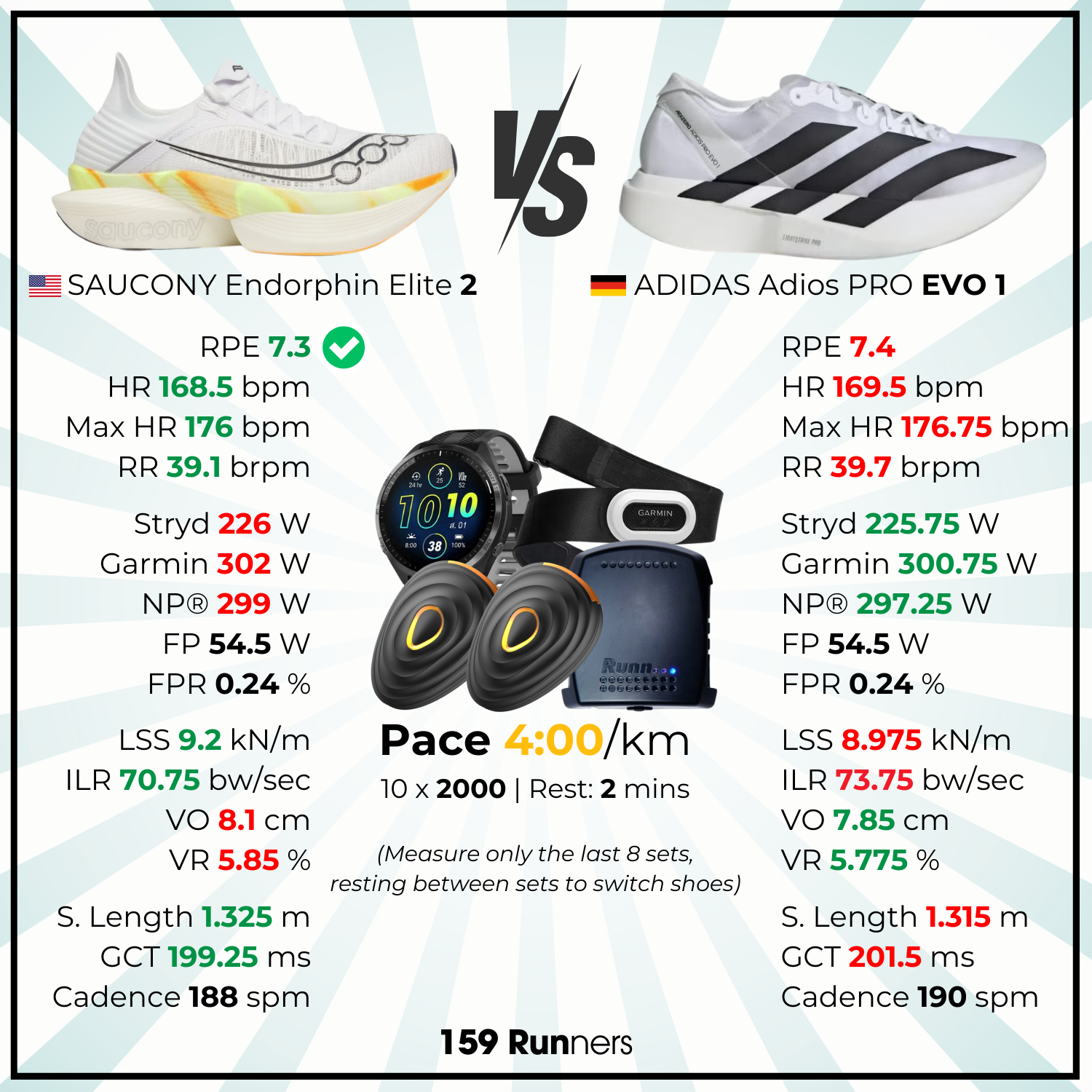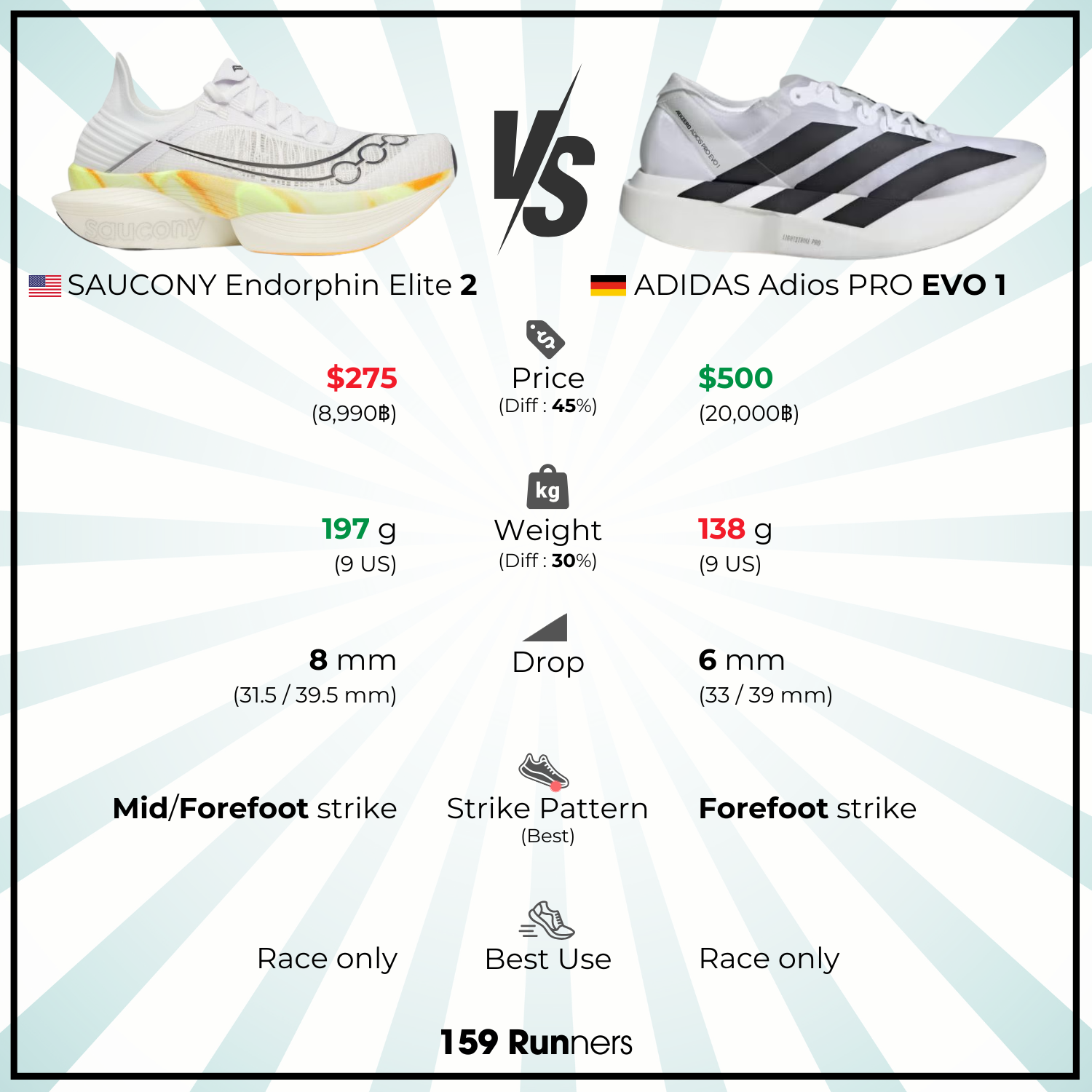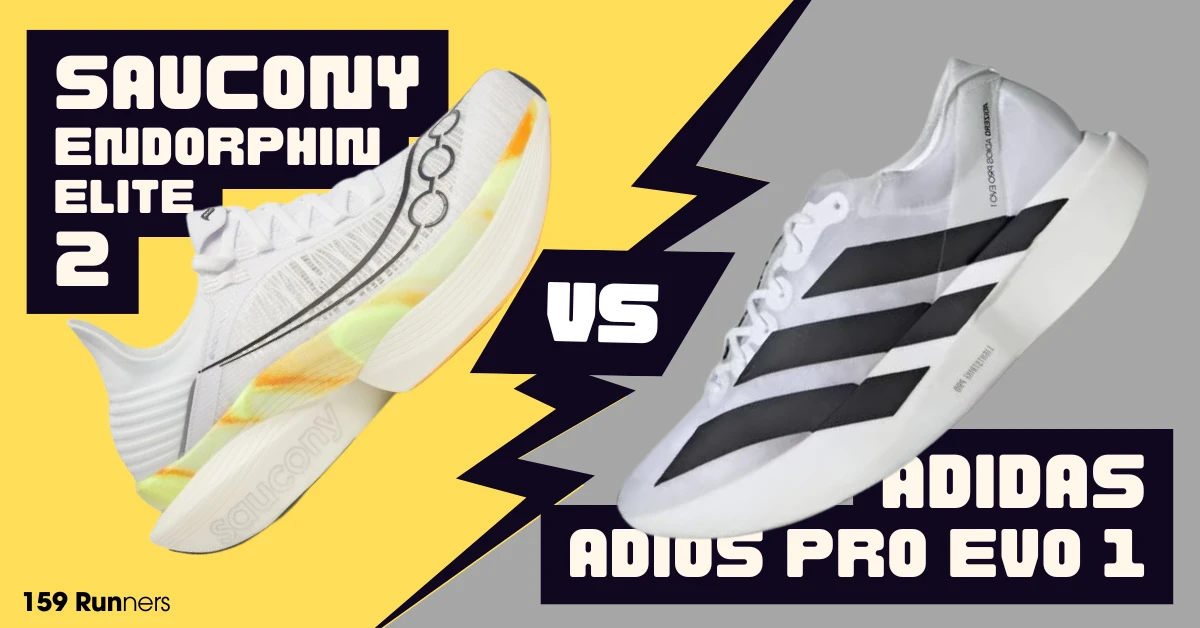SAUCONY Endorphin Elite 2 vs ADIDAS Adios PRO EVO 1
SAUCONY Endorphin Elite 2 vs ADIDAS Adios PRO EVO 1 – Overall Performance at 4:00/km Pace to Exhaustion. I’d give the SE2 a slight edge over the EVO1. 🔥
Feel on the Run: Between the two, I prefer the feel of the SE2. It delivers a soft, springy ride that makes running enjoyable. Switching to the EVO 1 right after made it feel firm and stiff in comparison. SE2 also comes out ahead in comfort, breathability, durability, and price.

Physiological Metrics: SE2 showed slightly lower average and max heart rate (HR), suggesting it might feel a bit easier to run in. It also had a lower respiratory rate, which could indicate less fatigue. These align with my perceived exertion (RPE) – in the final sets, the SE2 felt slightly better than the EVO1.
Running Power Metrics: EVO1 had better average power (both Garmin and Stryd metrics) and superior vertical oscillation (VO) and vertical ratio (VR), meaning it’s more energy-efficient vertically, with a forward-leaning stride rather than bouncing upward.
I suspect its mechanical efficiency comes from its lighter weight and aggressive rocker shape. Still, it couldn’t match the SE2’s bounce (SE2’s VO shows it’s bouncier than the EVO1).
Energy Return & Impact: SE2 had better Leg Spring Stiffness (LSS), meaning it returned energy more efficiently. It also showed a lower Impact Loading Rate (ILR), which helps reduce stress on the legs—suggesting SE2 may slightly lower injury risk and reduce fatigue.
Stride & Contact Time: SE2 had a longer stride length and shorter ground contact time—a surprising result since soft shoes usually compress more and stay on the ground longer.
It suggests the SE2, at high speeds, delivers instant propulsion without much compression. (At slower paces, the SE2 feels soft, compresses, then bounces back; at faster paces, it shifts to a soft, firm, instantly responsive character.)

Which Shoe Finishes a Marathon Faster?
Looking deeper at metrics like stride length, ground contact time, and cadence, and leaving out HR and RPE:
- Distance per Minute: Cadence x Stride Length shows the EVO1 covers about 0.75 meters more per minute (249.85 vs. 249.1 m/min).
- Ground Contact per Minute: GCT x Cadence reveals the SE2 has 0.92 seconds less ground contact per minute.
- Marathon Finish Time: Dividing marathon distance (42,195m) by speed per minute (from the first point), the EVO1 finishes a marathon about 35 seconds faster (2:48:46 vs. 2:49:21). This means the EVO1 has an edge in raw speed, crossing the finish line ~35 seconds earlier.
- Real-World Factors: Physiological factors matter in actual racing. The SE2’s lower HR (by ~1 bpm) and respiratory rate (by ~0.6 brpm) suggest it reduces fatigue, helping maintain pace consistency in the marathon’s later stages. This could potentially close or even overtake the ~35-second gap.
Summary: The Adidas Adios Pro Evo 1 offers better raw speed, finishing a marathon ~35 seconds faster (higher cadence with comparable stride length. The Saucony Endorphin Elite 2, though slightly slower, has lower GCT and reduces HR and respiratory rate at the same pace, saving energy and fighting fatigue better. It’s ideal for “long games,” prioritizing running economy and pace consistency over max speed in a marathon.
Overall Summary
- Saucony Endorphin Elite 2 is ideal for runners prioritizing long-distance efficiency, especially at faster paces (not ideal for slower than ~5:30/km). The foam is soft yet responsive and doesn’t bottom out. While it lacks a bit of stability, runners with good form can make the most of its energy return. Best suited for 21K to 42K races focused on consistent pacing and efficiency.
- Adidas Adios Pro Evo 1: Suited for runners wanting a lightweight, snappy shoe with a firm foam that still has some softness, not harsh. It’s great for high-cadence runners needing more stability than the SE2. Best for 5K to 10K races where speed is the focus, compared to the SE2.

Testing Methodology (for the data geeks)
- Tested on a treadmill to control speed, temperature, and humidity.
👉 April 20: 1000m (pace 4:00/km ) x 10 sets, 3-min rest (results based on last 8 sets). - Main test involved running the same protocol on the same day, split into sets with shoe swaps between sets. The first two sets were excluded from calculations due to unstable HR. Testing order: SS SS AA AS SA.
- Measured with:
- 👉 Garmin FR 965 & Garmin HRM Pro+ Chest Strap:
- Avg HR: Average heart rate per set.
- Max HR (MHR): Peak heart rate per set.
- Avg Power: Average power output.
- Normalized Power (NP®): Adjusted power to reduce variability.
- Respiration Rate (RR): Breathing rate during running; lower = less energy used.
- Vertical Oscillation (VO): Measures up-down bounce; lower is better (less energy wasted bouncing upward vs. forward).
- Vertical Ratio (VR): Stride length to VO ratio; lower is better (more efficient stride, less vertical waste).
- 👉 Stryd Duo (Next Gen):
- Stryd Power: Average power from Stryd.
- Cadence: Steps per minute; higher reduces impact.
- Stride Length: Average step length; longer is better if it doesn’t worsen FPR/VR.
- Ground Contact Time (GCT): Time foot is on ground; shorter is better (faster force transfer).
- Form Power (FP): Energy used in vertical/lateral movement (e.g., bouncing, swaying); lower is better.
- Form Power Ratio (FPR): Lower = more efficient form, more energy goes forward.
- Impact Loading Rate (ILR): Measures impact force on landing; lower = better shock absorption, less injury risk.
- Leg Spring Stiffness (LSS): Measures leg “bounce” or energy return; higher = better responsiveness.
- 👉 Runn Smart Treadmill Sensor: High-precision sensor for treadmill speed, feeding accurate pace to the watch (more reliable than watch arm swing or Stryd leg movement).
- 👉 Perceived Exertion (RPE): Purely subjective feel, used to gauge which shoe performed better when swapping every set. Differences were especially clear in later sets as legs fatigued, highlighting each shoe’s efficiency.
- 👉 Garmin FR 965 & Garmin HRM Pro+ Chest Strap:
Read the full in-depth review of 👉 SAUCONY Endorphin Elite 2

